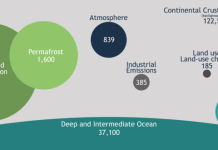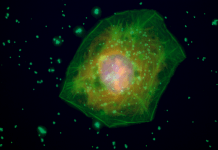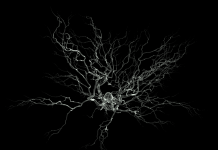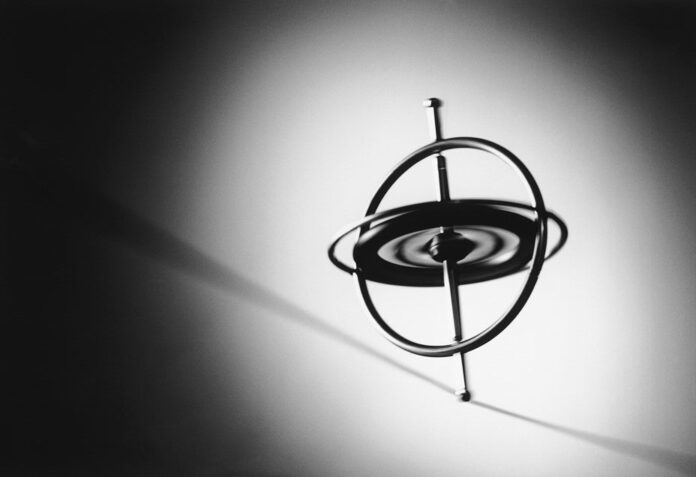Engineers have built the world’ tiniest light-sensing gyroscope which could be easily integrated into smallest portable modern technology.
Gyroscopes are common in every technology which we use in today’s times. Gyroscopes are used in vehicles, drones and electronic devices like mobiles and wearables as they help know the correct orientation of a device in three-dimensional (3D) space. Originally, a gyroscope is a device of a wheel which helps the wheel to spin fast on an axis in different directions. A standard optical gyroscope contains a spooled optical fibre carrying a pulse laser light. This runs in either clockwise or anticlockwise direction. In contrast, modern day gyroscopes are sensors, example in mobile phones there are microelectromechanical sensor (MEMS) present. These sensors measure forces which act on two entities of identical mass but which are wavering in two different directions.
The Sagnac effect
The sensors though now widely used have limited sensitivity and thus optical gyroscopes are needed. A crucial difference being that optical gyroscopes are able to perform a similar task but without any movable parts and with more accuracy. This is achievable by the Sagnac effect, an optical phenomenon which uses Einstein’s theory of general relativity to detect changes in angular velocity. During Sagnac effect, a beam of laser light is broken into two independent beams which now travel in opposite directions along a rounded path eventually meeting at one light detector. This happens only if the device is static and mainly because light travels at constant speed. However, if the device is rotating, the pathway of light also gets rotated causing the two separate beams to reach the light detector at a different timepoint. This phase shift is called Sagnac effect and this difference in synchronization is measured by the gyroscope and used to calculate orientation.
The Sagnac effect is very sensitive to noise in the signal and any surrounding noise like small thermal fluctuations or vibrations can disrupt the beams as they travel. And if the gyroscope is of a considerably smaller size then it is more prone to disruption. Optical gyroscopes are obviously much more effective but it is still a challenge to scale down optical gyroscopes i.e. reduce their size, because as they become smaller the signal transmitted from their sensors also weakens and then gets lost in the noise which is generated by all the scattered light. This causes the gyroscope more difficulty in detecting movement. This scenario has restricted the design of smaller optical gyroscopes. The smallest gyroscope having a good performance is at least the size of a golf ball and thus unsuitable for small portable devices.
New design for a small gyroscope
Researchers at California Institute of technology USA have designed an optical gyroscope with very low noise which uses laser instead of MEMS sensors and gets equivalent results. Their study is published in Nature Photonics. They took a tiny 2-square-mm silicon chip and installed a channel on it to guide light. This channel helps to guide light to travel in every direction around a circle. Engineers weeded out reciprocal noise by lengthening the path of laser beams by using two disks. As the path of the beam becomes longer, the amount of noise is evened out resulting in accurate measurement when the two beams meet. This enables use of smaller device but still maintaining accurate results. The device also reverses direction of the light to assist in noise cancellation. This innovative gyro sensor is named XV-35000CB. The improved performance was achieved by ‘reciprocal sensitivity enhancement’ method. Reciprocal means that it is affecting two independent beams of light in the same manner. The Sagnac effect is based upon detection of change between these two beams as they are travelling in opposite directions and this equals to being nonreciprocal. The light travels through mini optical waveguides which are small conduits which carry light, similar to wires in an electrical circuit. Any imperfections in the optical path or outside interference will affect both the beams.
Enhancement of reciprocal sensitivity improves signal-to-noise ratio enabling this optical gyroscope to be integrated onto a tiny chip maybe size of tip of a fingernail. This tiny gyroscope is at least 500 times smaller in size than existing devices but can successfully detect phase shifts 30 times smaller than the current systems. This sensor can be primarily used in systems to correct vibrations of a camera. Gyroscopes are now indispensable in different fields and current research shows that smaller optical gyroscopes are possible to design though it may take some time for this laboratory design to be commercially available.
***
{You may read the original research paper by clicking the DOI link given below in the list of cited source(s)}
Source(s)
Khial PP et al 2018. Nanophotonic optical gyroscope with reciprocal sensitivity enhancement. Nature Photonics. 12(11). https://doi.org/10.1038/s41566-018-0266-5
***






































